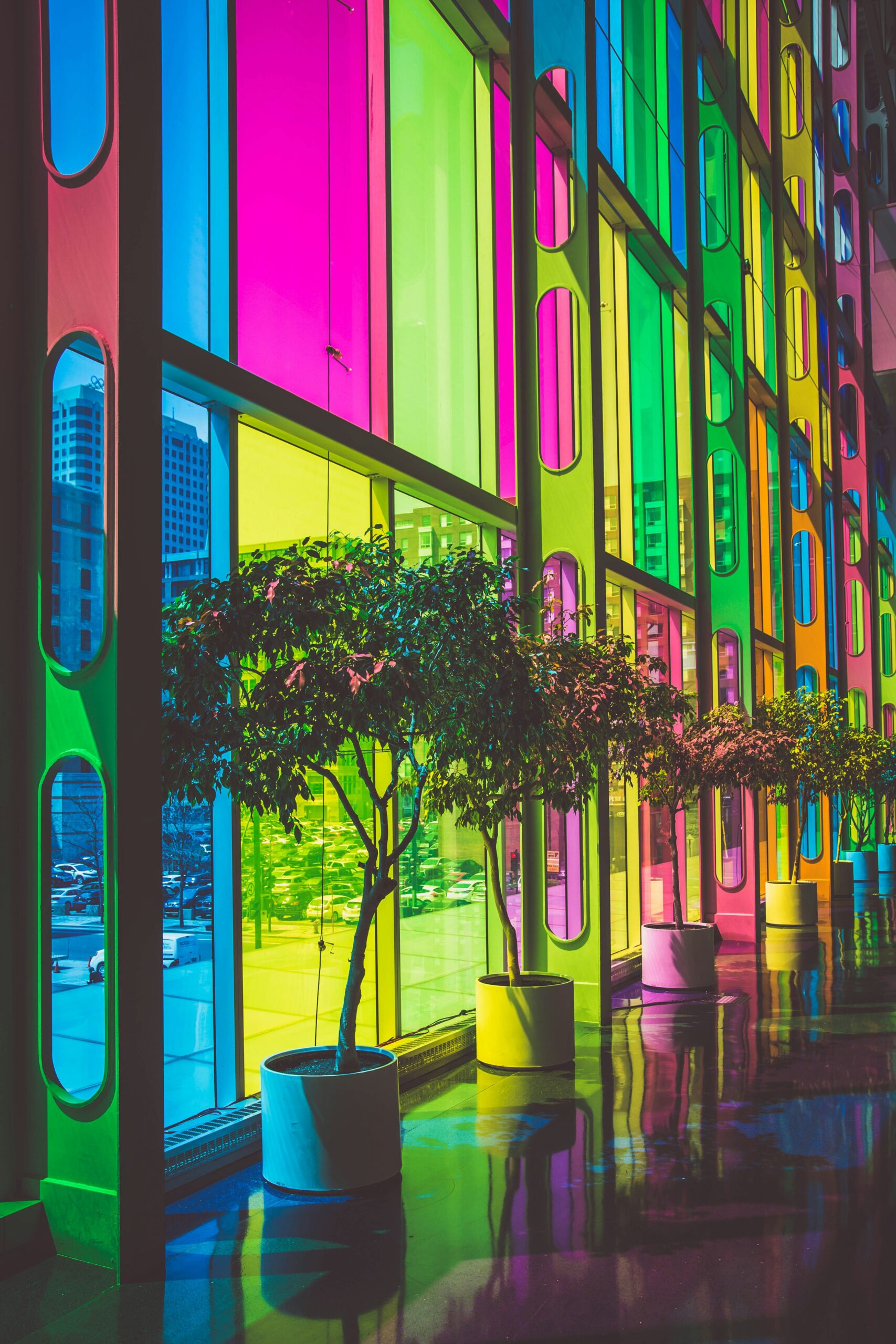Hi, there! I’m Jen Glantz, a color analysis expert. Let’s dive into Color Analysis Makeup.
According to a recent survey, 78% of makeup enthusiasts struggle to find their ideal color palette. I remember my own journey with color analysis makeup – it was a game-changer. This comprehensive guide will take you through the intricate world of personal color harmony, exploring everything from the psychology of color perception to cutting-edge genetic analysis techniques.
Let’s dive in.
Quick Resources:
- Use our AI Color Analysis Tool
- What is Color Analysis?
- Color Analysis Quiz
- Color Analysis Deep Dive
- Personal Style Color Analysis
Unveiling the Spectrum of Personal Color Harmony
Personal color harmony is the foundation of effective makeup application. It’s about understanding how your unique skin tone, eye color, and hair color interact with different makeup shades. Color analysis involves assessing an individual’s skin undertones, surface tones, and contrast levels. The process typically categorizes individuals into seasonal color palettes: Spring, Summer, Autumn, and Winter.
However, it’s not as simple as fitting everyone into neat boxes. According to a study by The Concept Wardrobe, two-thirds of the population doesn’t accurately fit into just one of the four traditional color seasons, highlighting the need for more nuanced color analysis approaches [The Concept Wardrobe].
This complexity is what makes color analysis so fascinating. It’s not just about following rules; it’s about discovering what truly works for you. Have you ever wondered why certain colors make you look vibrant while others wash you out?
Get your own color analysis here >>
The Psychology of Color Perception in Makeup
Our brains process color in fascinating ways, influencing how we perceive makeup on ourselves and others. The visual cortex processes color information through specialized neurons called “color-opponent cells”. This intricate system allows us to distinguish between millions of shades.
Color perception is influenced by surrounding colors, known as simultaneous contrast. This phenomenon explains why the same eyeshadow can look different depending on your skin tone or the colors you pair it with.
Certain colors can trigger specific emotional responses, affecting mood and self-perception. This psychological aspect of color is crucial in makeup application. It’s not just about looking good; it’s about feeling good too.
Neurological Color Processing and Makeup Application
The way our brains interpret color signals has a direct impact on how we apply and perceive makeup. The retina contains three types of cone cells, each sensitive to different wavelengths of light. This trichromatic vision system is the foundation of our color perception.
Color information is processed in the V4 region of the visual cortex. This area of the brain is responsible for complex color processing, including color constancy – our ability to recognize colors under different lighting conditions.
Neuroplasticity allows the brain to adapt to new color perceptions over time, potentially influencing makeup preferences. This means that as you experiment with different colors and techniques, your brain actually becomes better at perceiving and appreciating them.
Emotional Responses to Color in Cosmetics
Colors in makeup can evoke powerful emotional responses. Warm colors like red and orange tend to evoke feelings of excitement and energy. Cool colors like blue and green are often associated with calmness and tranquility.
However, it’s important to note that personal associations with colors can override general color psychology principles. Your unique experiences and cultural background play a significant role in how you perceive and respond to different colors.
Get your own color analysis here >>
The Role of Light in Color Analysis
Light is a crucial factor in color perception and analysis. It’s composed of different wavelengths that interact with pigments in makeup and skin. The color rendering index (CRI) measures how accurately a light source reveals colors. This is why makeup can look drastically different under various lighting conditions.
Metamerism occurs when colors appear to match under one light source but differ under another. This phenomenon is particularly important in makeup application, as your carefully chosen foundation might look perfect in your bathroom but completely off in natural daylight.
Natural vs. Artificial Light Considerations
The type of light you’re in can dramatically change how your makeup looks. Natural daylight has a full spectrum of colors and is considered the ideal for color matching. It provides the most accurate representation of how your makeup will appear in everyday situations.
Fluorescent lighting can cast a greenish tint, while incandescent bulbs produce a warm, yellow light. These artificial light sources can significantly alter the appearance of your makeup, often in unflattering ways.
LED lighting varies in color temperature and can affect makeup appearance differently based on its specifications. Some high-end makeup mirrors now come with adjustable LED lighting to simulate different environments.
Sarah, a makeup artist I know, always recommends her clients check their makeup in different lighting conditions before leaving home. She suggests applying makeup near a window for natural light, then checking it in the bathroom under artificial light to ensure a consistent appearance throughout the day.
Get your own color analysis here >>
Seasonal Light Variations and Makeup Adaptation
As seasons change, so does the quality of natural light. This variation can affect how your makeup appears, requiring adjustments to your color palette and application techniques throughout the year.
Winter light tends to be cooler and more blue-toned, potentially washing out warm makeup colors. This is why many people find themselves reaching for deeper, richer shades during the colder months.
Summer light is often more intense and can make colors appear brighter and more saturated. You might find that your usual foundation looks a bit too dark or your blush seems overly vibrant during the height of summer.
Seasonal changes in UV levels can affect skin tone, necessitating adjustments in foundation and concealer shades. Many makeup enthusiasts find they need different foundation shades for summer and winter.
The Intersection of Genetics and Color Analysis
Your genetic makeup plays a significant role in determining your optimal color palette. Genetic factors influence melanin production, which determines skin, hair, and eye color. Certain genes are associated with specific undertones and color sensitivities.
Recent advancements in genetic analysis are providing new insights into personalized makeup strategies based on an individual’s DNA. This cutting-edge approach is revolutionizing how we think about color analysis makeup.
Get your own color analysis here >>
DNA-Based Color Profiling
DNA-based color profiling is an emerging field that combines genetic analysis with traditional color theory. This innovative approach can provide highly personalized makeup recommendations based on your unique genetic makeup.
Genetic markers can indicate predispositions to certain skin undertones and pigmentation patterns. This level of detail goes far beyond what we can see with the naked eye, offering insights into how your skin might react to different pigments and formulations.
DNA analysis can reveal potential sensitivities to specific makeup ingredients. This information is invaluable for those with sensitive skin or allergies, allowing for more targeted and safe product choices.
Genetic profiling can help predict how an individual’s coloring may change over time. This forward-looking approach to color analysis can help you make more informed decisions about long-term makeup and skincare strategies.
Get your own color analysis here >>
Genetic Markers for Skin Undertones
Specific genes are responsible for the subtle variations in skin undertones. The MC1R gene is associated with red hair and fair skin tones. If you’ve ever wondered why some people seem to have a natural “peaches and cream” complexion, it might be due to variations in this gene.
Variations in the SLC24A5 gene can influence skin lightness or darkness. This gene plays a crucial role in melanin production and distribution, affecting how different makeup shades appear on your skin.
The OCA2 and HERC2 genes play a role in determining eye color, which can affect makeup color choices. These genes influence the amount and type of pigment in the iris, which in turn can impact which eyeshadow colors look most flattering on you.
Hereditary Color Sensitivity and Makeup Choices
Your genetic makeup can influence how sensitive you are to certain colors. Color blindness, which affects color perception, is genetically inherited. While full color blindness is rare, many people have some degree of color vision deficiency that can impact their makeup choices.
Some individuals may have a genetic predisposition to perceiving certain colors more vividly. This heightened sensitivity can make some makeup shades appear more intense or vibrant to these individuals.
Genetic variations can influence how the brain processes color information, affecting personal color preferences. This explains why two people with similar coloring might have vastly different reactions to the same makeup palette.
Emma, a client of mine, has a rare genetic variation in her OCA2 gene. She discovered through genetic testing that she perceives blues more intensely than the average person. This insight helped her understand why certain blue-based eyeshadows always seemed overwhelming on her, leading her to opt for more muted, greyed-out blue tones in her makeup routine.
Epigenetic Factors in Personal Color Evolution
Epigenetics explores how environmental factors and lifestyle choices can alter gene expression. These changes can potentially affect your optimal color palette over time, requiring adjustments to your makeup routine.
Epigenetic modifications can alter melanin production, potentially changing skin tone. This means that your perfect foundation match today might not be ideal a few years from now, even if you haven’t experienced significant lifestyle changes.
Environmental factors like sun exposure can trigger epigenetic changes affecting skin pigmentation. This is why consistent sun protection is crucial not just for skin health, but also for maintaining a consistent makeup appearance.
Stress and diet can influence gene expression related to skin health and coloration. Have you ever noticed how your skin looks different after a period of high stress or dietary changes? That’s epigenetics at work!
Understanding these epigenetic factors can help you adapt your color analysis makeup approach over time, ensuring that your makeup routine evolves with you.
Nutritional Influences on Skin Tone and Makeup Compatibility
Your diet plays a crucial role in your skin’s health and appearance. Carotenoids from fruits and vegetables can impart a warm glow to the skin. This natural radiance can affect how certain makeup colors appear on your skin.
Omega-3 fatty acids contribute to skin hydration, potentially affecting how makeup sits on the skin. Well-hydrated skin tends to hold makeup better and can make colors appear more vibrant.
Antioxidants can protect against skin damage, maintaining a more even tone for makeup application. Foods rich in vitamins C and E, for example, can help combat free radical damage and keep your skin looking fresh and radiant.
Understanding how nutrition affects your skin tone can help you make informed decisions about both your diet and your makeup choices. It’s a holistic approach to beauty that considers what you put both on and in your body.
Get your own color analysis here >>
Stress-Induced Color Changes and Makeup Adaptation
Stress can significantly impact your skin tone and overall appearance. Chronic stress may increase cortisol production, affecting skin tone and texture. This hormonal shift can lead to changes in your skin’s undertones, potentially altering how certain makeup shades look on you.
Stress can exacerbate conditions like rosacea, necessitating adjustments in color correction. If you find yourself dealing with more redness or uneven skin tone during stressful periods, you might need to adjust your concealer or foundation choices.
Sleep deprivation due to stress can alter skin appearance, requiring different makeup approaches. Lack of sleep can lead to a duller complexion and more pronounced under-eye circles, which might call for brighter, more illuminating makeup choices.
Get your own color analysis here >>
Advanced Color Theory in Makeup Artistry
Advanced color theory elevates makeup artistry to new heights. It incorporates principles of harmony, contrast, and balance. Understanding color temperature and intensity is crucial for sophisticated makeup looks.
A study by Colorwise.me found that 85-90% of clothing choices can be eliminated based on color alone when using personal color analysis, leading to more efficient and satisfying shopping experiences [Colorwise.me].
Spectral Analysis in Makeup Formulation
Spectral analysis is a cutting-edge technique used in makeup formulation. Spectrophotometry measures the reflection or transmission of light at different wavelengths. Color matching systems use spectral data to create precise foundation shades.
This scientific approach ensures that makeup products are tailored to specific color profiles, providing more accurate and flattering results. It can also help predict how makeup colors will appear under different lighting conditions.
Nanopigment Technology in Color-Adaptive Cosmetics
Nanopigment technology is revolutionizing color-adaptive cosmetics. These ultra-fine particles can change color in response to external stimuli. Some color-adaptive foundations use pH-sensitive pigments that adjust to your skin’s natural acidity.
Thermochromic pigments in lipsticks can change color based on body temperature. This innovation allows for truly personalized makeup experiences.
Makeup brand XYZ recently launched a line of color-adaptive lipsticks using nanopigment technology. The lipstick appears clear in the tube but changes to a unique shade of pink or red when applied, based on the wearer’s individual lip pH and temperature. This innovation has allowed the brand to create a “one shade fits all” product that truly customizes itself to each user.
Synesthesia-Inspired Makeup Techniques
Synesthesia, a neurological phenomenon where one sensory experience triggers another, can inspire unique approaches to color analysis in makeup. Synesthetes may associate colors with specific sounds, tastes, or emotions.
Some makeup artists use synesthetic principles to create multi-sensory makeup experiences. Exploring personal color-emotion associations can lead to more meaningful makeup choices.
Cross-Sensory Color Perception in Makeup Application
Engaging multiple senses during makeup application can enhance your color perception and selection process. Scented makeup products can influence color perception through olfactory-visual associations.
Textural elements in makeup can affect how colors are perceived on the skin. Some makeup artists use sound or music to guide color selection and application techniques.
Aura-Based Color Analysis for Holistic Makeup Artistry
Aura-based color analysis incorporates energetic and spiritual aspects into makeup choices. While not scientifically proven, this alternative approach can offer a unique perspective on personal color harmony.
Aura photography claims to capture the energy field surrounding a person, associating it with specific colors. Some practitioners believe that wearing makeup colors aligned with one’s aura can enhance overall well-being.
Aura-based color analysis often incorporates chakra theory, associating specific colors with energy centers in the body.
Cultural and Historical Perspectives on Color Analysis
Color analysis in cosmetics has a rich cultural and historical background. Different cultures have unique associations with colors, influencing makeup traditions. Historical beauty standards have shaped color analysis techniques over time.
Get your own color analysis here >>
Ancient Color Wisdom in Contemporary Makeup
Ancient civilizations had sophisticated understanding of color and its applications in cosmetics. Ancient Egyptians used specific colors in makeup for spiritual and medicinal purposes.
Traditional Chinese color theory associates colors with the five elements and their corresponding energies. Native American tribes used natural pigments in face painting, with colors holding symbolic meanings.
Ayurvedic Color Principles in Makeup Artistry
Ayurveda, an ancient Indian system of medicine, offers unique insights into color theory that can be applied to makeup. Ayurveda associates colors with different doshas or body types.
Certain colors are believed to balance specific energies in the body. Ayurvedic color therapy techniques can be adapted for makeup application to promote overall well-being.
Evolving Cultural Norms in Color Analysis
Cultural attitudes towards color and beauty are constantly evolving. Globalization has led to cross-cultural influences in makeup trends and color preferences.
Social media has accelerated the spread of diverse beauty standards and color analysis techniques. The body positivity movement has encouraged a more inclusive approach to personal color analysis.
According to a survey by Fizzymag, 72% of makeup enthusiasts reported feeling more confident after learning about and applying color analysis techniques to their makeup routines [Fizzymag].
Decolonizing Color Analysis in the Beauty Industry
Traditional color analysis methods often reflect a limited cultural perspective. Traditional color seasons may not adequately represent the full spectrum of skin tones.
Some cultures have unique categorizations of skin tones that differ from Western standards. Inclusive color analysis considers a wider range of undertones and contrast levels.
Biometric Approaches to Color Analysis
Biometric technology is bringing unprecedented precision to color analysis in makeup. Biometric color analysis uses measurable biological characteristics to determine optimal makeup colors.
These approaches often integrate data from multiple sources for a comprehensive color profile.
Get your own color analysis here >>
Retinal Imaging for Precise Color Matching
Advanced eye-scanning technology can reveal subtle variations in personal coloring that are invisible to the naked eye. Retinal imaging can detect minute differences in eye color and pattern.
The technology analyzes the distribution of melanin and other pigments in the eye. Retinal scans can provide insights into an individual’s unique color perception capabilities.
Melanin Distribution Mapping
By analyzing the unique patterns of melanin in your skin, makeup artists can develop more nuanced and flattering application techniques. Melanin mapping uses specialized imaging to visualize melanin distribution across the face.
Different types of melanin (eumelanin and pheomelanin) affect skin color in distinct ways. Understanding melanin patterns can help predict how different makeup shades will interact with the skin.
A high-end makeup brand recently introduced a melanin mapping service in their flagship stores. Clients undergo a quick, non-invasive scan that creates a detailed map of their facial melanin distribution. This information is then used to create a custom-blended foundation that perfectly matches and enhances their unique skin tone, taking into account variations in pigmentation across different areas of the face.
Microbiome-Aware Color Analysis
The skin microbiome plays a crucial role in skin health and appearance. The skin microbiome can influence skin pH, which affects how makeup colors appear.
Certain bacteria on the skin can interact with makeup pigments, potentially altering their appearance. A balanced microbiome contributes to skin clarity and tone, impacting overall makeup performance.
Probiotic Cosmetics and Color Adaptation
Probiotic makeup formulations work in harmony with your skin’s microbiome to enhance your natural coloring. Probiotic cosmetics contain live bacteria or prebiotics that support a healthy skin microbiome.
Some probiotic makeup products can adjust their color based on the skin’s bacterial composition. Microbiome-friendly makeup may improve skin health over time, potentially altering optimal color choices.
Environmental Factors in Dynamic Color Analysis
External environmental conditions can significantly influence your personal coloring and how makeup performs on your skin. Environmental factors like humidity, temperature, and air quality can affect skin appearance and makeup performance.
Seasonal changes in environment necessitate adjustments in color analysis and makeup application.
Atmospheric Pollution and Color Perception
Air quality and pollution levels can alter your skin tone and affect how makeup colors appear. Particulate matter in polluted air can dull skin appearance and alter how light reflects off the skin.
Certain pollutants can cause oxidative stress, potentially changing skin tone over time. Some makeup formulations are designed to protect against environmental pollutants, which can affect color choices.
UV Index-Responsive Makeup Strategies
Developing makeup techniques that account for varying UV exposure levels throughout the day can help protect your skin and maintain a consistent makeup appearance. High UV levels can cause immediate tanning, altering skin tone and makeup appearance.
Some advanced sunscreens change color to indicate UV protection levels. UV-responsive makeup pigments can provide visual cues for reapplication of sun protection.
Circadian Rhythm-Based Color Adjustments
Your body’s natural daily cycles influence skin tone and how makeup interacts with your skin. Skin temperature and oil production fluctuate throughout the day, affecting makeup performance.
Hormone levels change during the day, potentially impacting skin color and texture. Light exposure at different times of day can alter how makeup colors are perceived.
Chronobiological Makeup Application
Aligning your makeup routine with your body’s natural biorhythms can enhance color performance and overall appearance. Cortisol levels peak in the morning, potentially affecting skin’s oil production and color.
Skin cell renewal accelerates during sleep, which can influence morning makeup application. The skin’s barrier function changes throughout the day, impacting how makeup adheres and appears.
Learnings Recap
- Color analysis makeup is a multifaceted field that combines science, psychology, and artistry
- Genetic factors, environmental conditions, and cultural perspectives all play crucial roles in determining optimal makeup colors
- Advanced technologies like biometric analysis and probiotic cosmetics are revolutionizing personalized makeup approaches
- Understanding the interplay between light, skin biology, and makeup pigments is essential for achieving Thank you for the reminder. I’ll continue from where I left off:consistent and flattering results
- Adapting makeup techniques to account for circadian rhythms and environmental factors can enhance overall appearance and makeup performance
Get your own color analysis here >>
1-800-BRIDESMAID
The Newlywed
Card Game
something extra to love
Read the weekly newsletter from Bridesmaid for Hire, 1-800-Bridesmaid, to hear about real stories, from strangers, who need advice on love, life, friendship, and so much more.
Looking for the perfect wedding gift for someone you adore? Grab The Newlywed Card Game. It's a fun and interactive game they can play on their honeymoon or future date nights.




